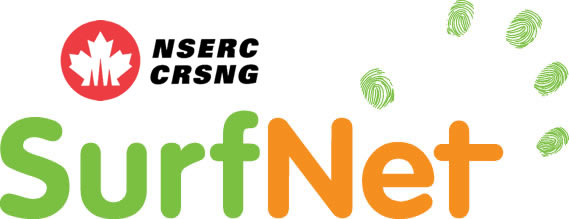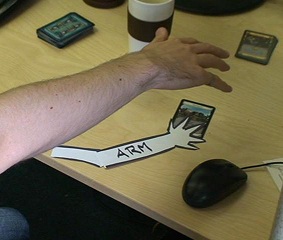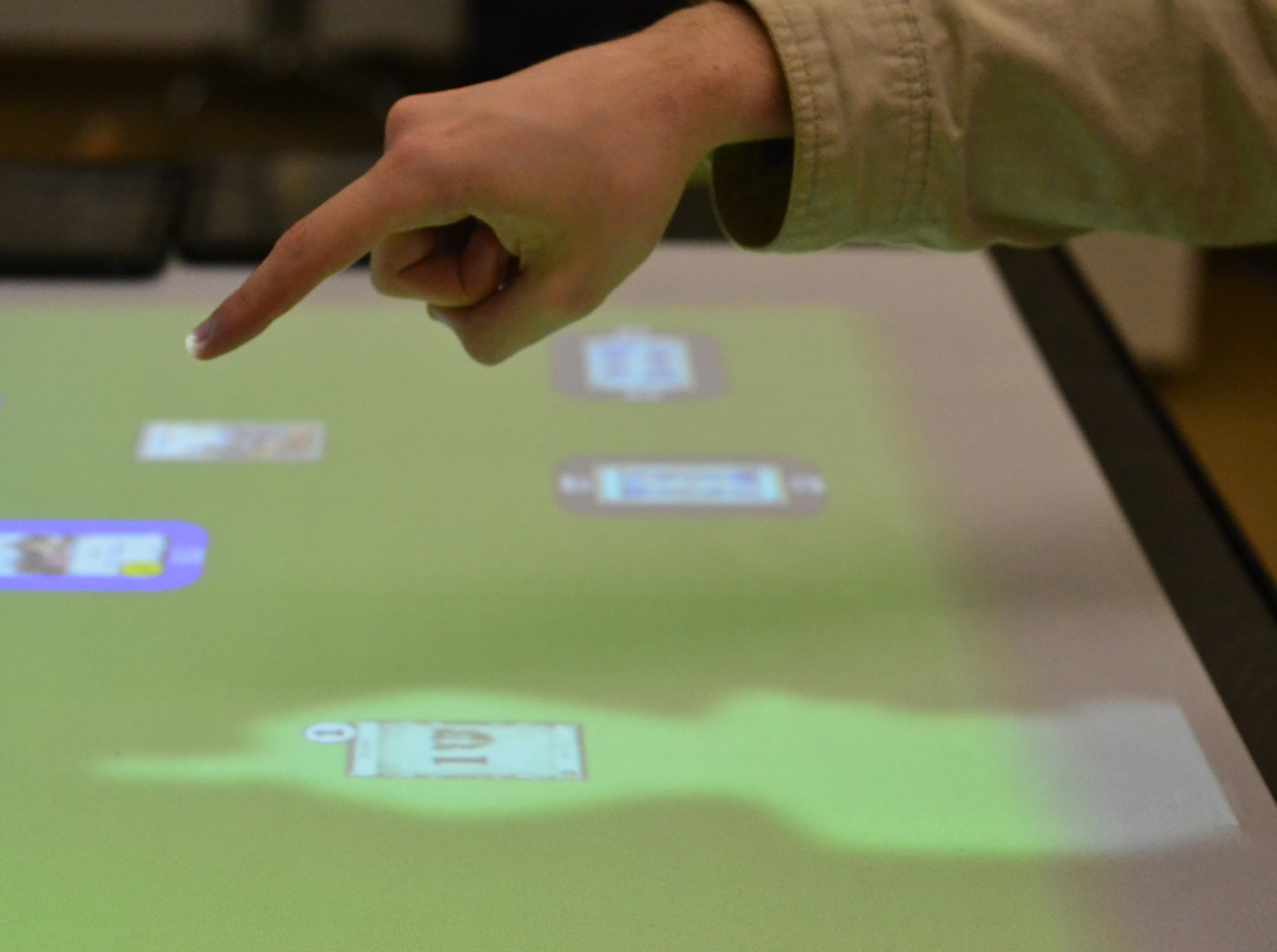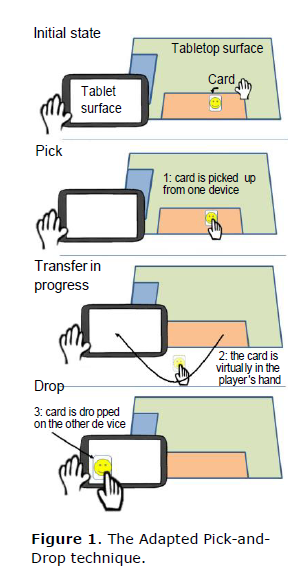Bridging Private and Shared Interaction Surfaces in Collocated Groupware
Description
The use of personal surfaces, such as smartphones or tablets, in conjunction with a shared surface, such as a digital tabletop, enables the use of private, secure, or proprietary data during a group situation. At present, moving information between digital tabletops and such peripheral devices tends to be cumbersome, often interfering with the task or activity at hand by capturing the attention of the person initiating the information transfer. This project aims to improve this information transfer experience to enable people to remain engaged in the ongoing group activity.
The main idea being investigated in this project is to track the user during a Pick-and-Drop-style (Rekimoto, 1997) transfer action between the peripheral device and the digital tabletop and provide visual feedback on the digital tabletop surface. This feedback depicts the information that is in transit between devices as an artifact “held” in the hand of the transferee, moving in real-time below the user’s hand until the artifact is released. This project builds on the previous SurfNet project, UbiCursor, in that it focuses on providing people awareness information when information is “between” displays (i.e. in the “ether”).
To investigate the proposed design concept, a case study of a digital tabletop game was undertaken. The commercial card-based game Dominion was implemented in a digital tabletop application (with permission of the game publisher Rio Grande Games) and several proposed content transfer techniques were evaluated over several iterative studies (see associated papers on this project page). The game Dominion was chosen as it requires players to hold private hands of cards, as well as to share decks of cards with other players, typically on a table.
The main project results were that providing device-appropriate visual awareness cues enhances the usability of cross-device transfer interaction. The most effective techniques we implemented required above-the-table tracking sensors external to the table capable of distinguishing between different tabletop users (see Surface Ghosts – Scott et al. ITS 2014). However, our results suggest that it may be possible to provide improved awareness during transfer by using less sophisticated user tracking techniques, such as proximity sensing. When no user sensing is possible, we also found using a straightforward “virtual portal” approach, where each connected device has a dedicated interface container through which content can be passed (see Scott et al. CTS 2014).
Project Images
| Initial Design Concept (left) and Implemented Surface Ghost visual feedback (right). |
|---|
|
|
| Adapted Pick-and-Drop cross-device transfer interaction on tabletops that cannot distinguish between multiple tabletop users. |
|---|
|
|







